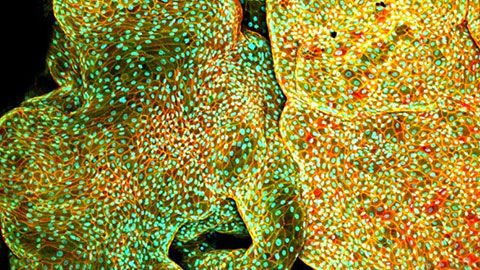Improvements to in vitro three-dimensional (3D) models are making them increasingly better at mimicking in vivo-like cellular behavior. Every tissue presents a distinct microenvironment with a unique blend of biochemical and biophysical components that dictate cellular behavior. Recreation of critical features of tissues that nurtures recapitulation of in vivo-like cellular behavior is the essence of an effective 3D model. In this webinar, through specific examples of 3D models for tissue development and cancer, we will revisit the fundamental principles of designing 3D models that can effectively recapitulate critical features of the tissues in vitro and applications of such models in mechanistic studies and drug testing. Our work also highlights the importance of 3D imaging systems, such as laser scanning confocal microscopes, which are necessary for such work.
In the first part of this webinar, we will talk about tissue mimetic-synthetic scaffolds for breast cancer and its stroma. By designing poly(ε-caprolactone) (PCL) scaffolds to mimic the architecture and stiffness of metastatic breast tumor, we developed a comprehensive 3D model that allowed the formation of tumoroids of breast cancer cells with enhanced capabilities of metastatic invasion, progression, and colonization. Moreover, the cells cultured on the PCL scaffolds were able to better mimic xenograft tumor in mice and human cancer tissues compared to the cells cultured on 2D dishes. By allowing the deposition of matrix by cancer-associated fibroblasts (CAFs), we were able to make these PCL scaffolds amenable to attachment and growth of primary patient-derived breast cancer cells to understand the patient heterogeneity in drug response for precision medicine. By designing a fibrous scaffold with PCL to mimic the fibrotic extracellular matrix (ECM) present in breast cancer, we were able to achieve fibrogenic and proinflammatory activation of patient-derived CAFs on such matrices, similar to the desmoplastic stroma observed in tumors.
In the second part of this webinar, we will discuss an in vitro morphogenetic model for the development of intrahepatic bile ducts. By recreating conditions to mimic the invasion of hepatic progenitor cells into the septum transversum mesenchyme in culture, we were able to observe in vivo-like morphogenesis and the formation of biliary ductal structures. We observed that a drug that causes vanishing bile duct syndrome specifically inhibited the morphogenesis, highlighting the potential of this model to screen for biliary toxins.

